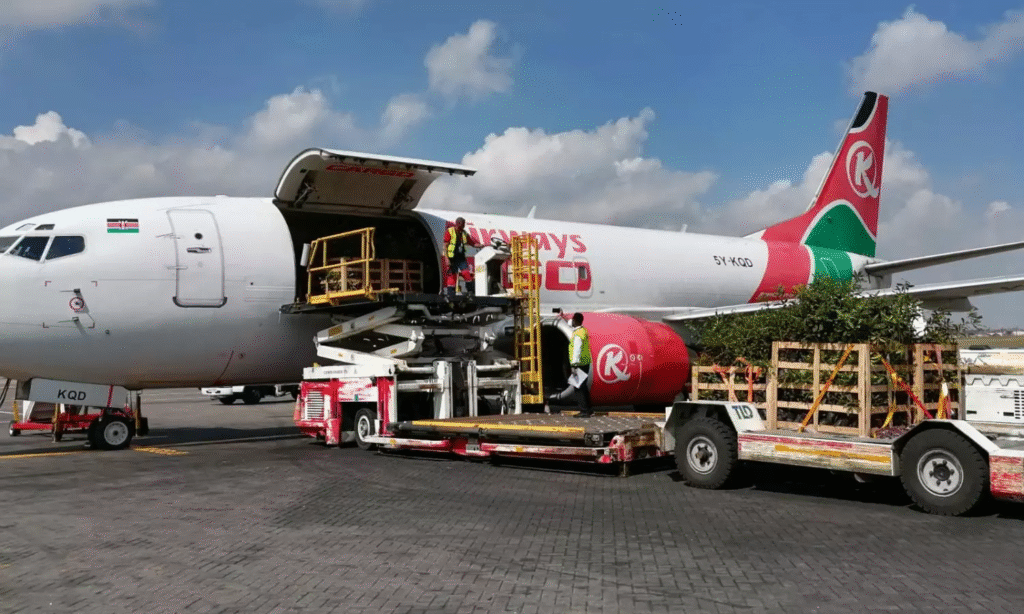- East Africa’s cargo aviation industry remained resilient amid shifting global supply chains, technological adoption, and sustained e-commerce activity. While the peak from the COVID-19 era tapered off, regional carriers adapted to evolving logistics demands by upgrading fleets and investing in infrastructure.

Regional Market Overview
- East Africa has seen a steady cargo increase, aligned with the 3.2% global increase reported by IATA. Rising exports—particularly fresh produce, flowers, and pharmaceuticals—along with e-commerce logistics boosted volumes. Kenya, Ethiopia, and Rwanda emerged as cargo leaders. Nairobi’s JKIA remained the region’s main hub, supported by cold-chain infrastructure, while Addis Ababa benefited from its central location and Ethiopian Airlines’ network strength.
Leading Operators and Fleets
- Ethiopian Cargo led the continent with a growing fleet of Boeing 777Fs and converted 737-800Fs. Kenya Airways Cargo expanded its capacity through leasing arrangements and cargo partnerships. Astral Aviation, based in Nairobi, operated converted 757Fs and added capacity for regional operations. RwandAir and Uganda Airlines explored cargo fleet development, with Uganda testing short-haul freighters.
Freighter Conversions and Aircraft Strategy
- Freighter conversions remained popular due to cost-efficiency. Airlines increasingly adopted converted Airbus A321P2F and Boeing 737-800s for intra-African routes. Local maintenance hubs in Addis Ababa and Nairobi aligned with this demand. Kenya Airways explored conversion deals with leasing firms, targeting short- and medium-haul routes driven by e-commerce and fresh exports.
Infrastructure Developments
- Cargo infrastructure projects progressed across the region. JKIA expanded cold storage and automated tracking systems. Addis Ababa Bole International launched a new pharma terminal, while Kigali advanced its cargo terminal’s second phase, targeting high-value and time-sensitive shipments. Tanzania upgraded cargo facilities at JNIA to support agricultural exports.
Digitalization and Technology
- Digital adoption surged with e-AWB implementation nearing 80% across major hubs. AI and blockchain applications were piloted for cargo tracking, capacity optimization, and customs efficiency. Rwanda and Uganda experimented with drone logistics to reach underserved areas, showcasing innovation in rural delivery systems.
Environmental and Operational Challenges
- Sustainability adoption was slow, with SAF availability limited. However, Ethiopian Airlines pursued fuel-efficient upgrades, while Astral evaluated electric aircraft options. Challenges included high fuel prices, geopolitical tensions, and ground-handling inefficiencies. Secondary airports struggled with outdated equipment and trained personnel shortages.
Outlook
East Africa’s cargo aviation sector reflected strong fundamentals: regional demand growth, innovation in logistics, and gradual fleet modernization. Strategic investments and regional partnerships positioned the industry for continued expansion across the continent and beyond.


